6 QA Testing Methodologies and Techniques in 2025
Often, there isn't one clear guide to follow, making learning about software testing confusing. Trying to fully understand something when there's so much information out there, but it's all over the place and very specific, can be challenging. To solve this, we’ve put together different pieces of the software testing puzzle to help you get a complete understanding. Continue reading to learn more about the emerging QA testing methodologies and techniques of 2025, bridging gaps and enhancing clarity in this constantly changing field.
Join our community of 70,000+ testers around the globe and earn money testing websites and apps in your free time.
What is QA?
Quality Assurance (QA) is a systematic process designed to determine whether a product or service meets specified requirements. It is a proactive approach that helps you prevent defects before they occur. Testing, a component of QA, is the practice of executing a program or application to find errors.
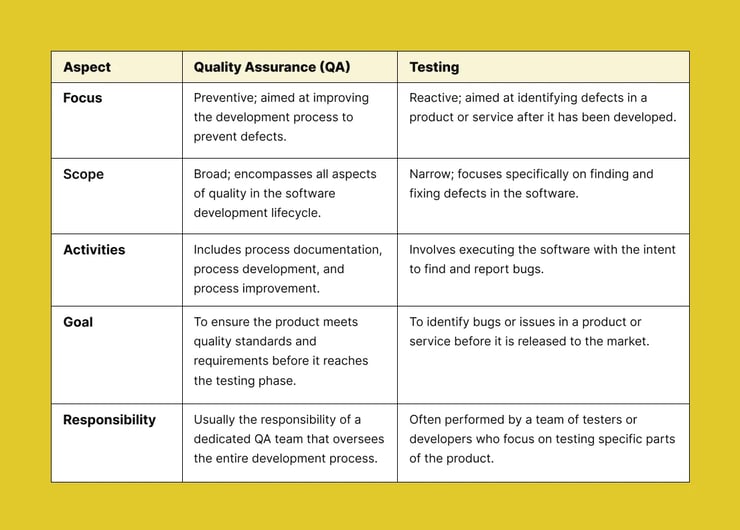
Understanding the distinctions: Software testing methodologies vs. types of software testing
Let's go into more detail about these differences below.
What are software testing methodologies?
Software Testing Methodologies are overarching strategies or frameworks that guide the overall approach to testing throughout the software development lifecycle. They include principles, practices, and processes that determine how testing is planned, executed, and managed.
Purpose
The goal is to have a consistent and effective approach to ensure quality throughout the entire development process. These methodologies often integrate testing into every stage of software development to catch and resolve issues early, improve efficiency, and ensure the final product meets user expectations.
Implementation
These provide a framework or set of guidelines that shape the culture and workflows of software development teams. They influence when and how testing is integrated into the development process.
What are the types of software testing?
Types of Software Testing represent specific techniques or methods used to test the software. They focus on what is being tested and how. They are further categorized based on various criteria, such as:
- The phase of testing (unit, integration, system)
- The testing objective (functional vs. non-functional testing).
Purpose
The aim is to evaluate specific aspects of the software, such as functionality, performance, security, and usability. Each type of testing targets a particular area of concern to be sure that software behaves as intended under various conditions.
Implementation
Testers perform these tasks or procedures according to the methodologies and project requirements using various tools and techniques.
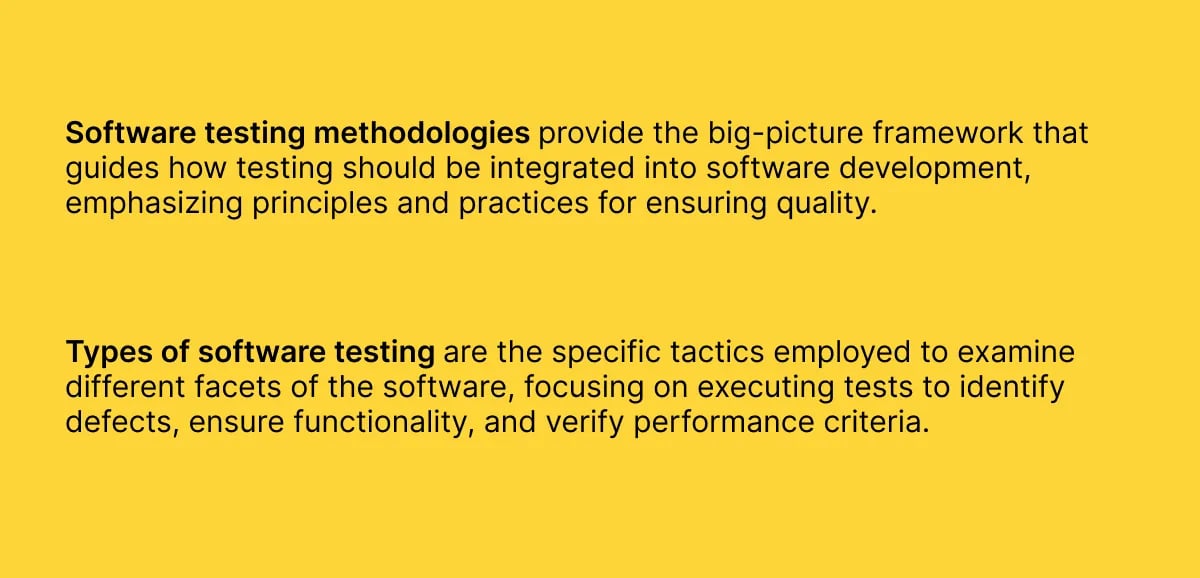
Key methodologies and approaches in software testing
In this section, we'll review the most renowned and widely used testing methodologies.
1. Agile Methodology
The Agile model is renowned for its broad application, extending beyond testing to encompass software development and marketing. It operates through a sequence of brief, focused periods called sprints, managed by dedicated teams who adaptively respond to evolving project requirements using various project management tools.
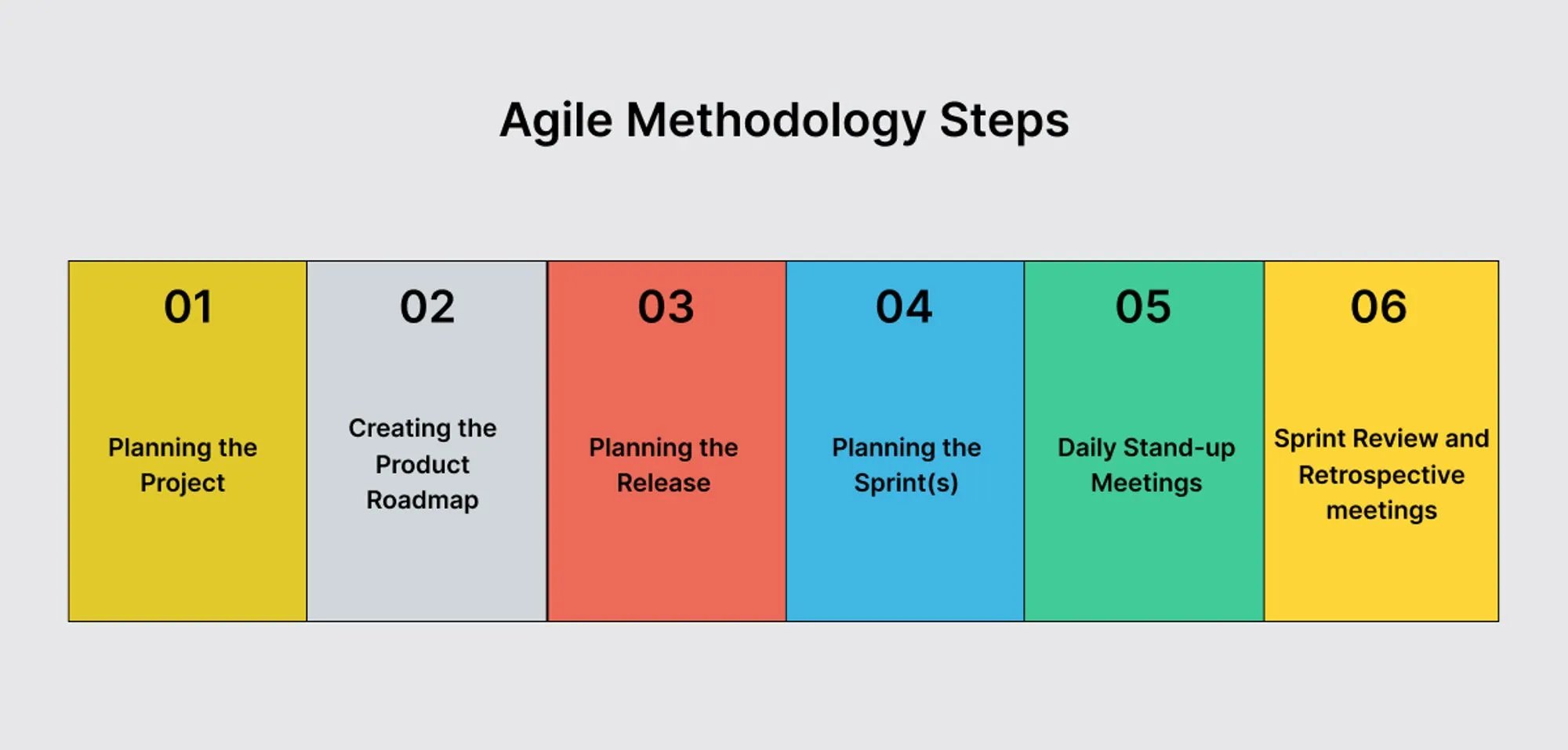
One of the key strengths of Agile is its focus on early and continuous delivery of valuable software, which inherently reduces risks associated with project development. The methodology's iterative nature allows teams to reflect on and adapt their strategies based on feedback and findings from previous sprints. For instance, if a particular product segment harbored more defects than anticipated, subsequent iterations can allocate additional focus and testing resources to that area.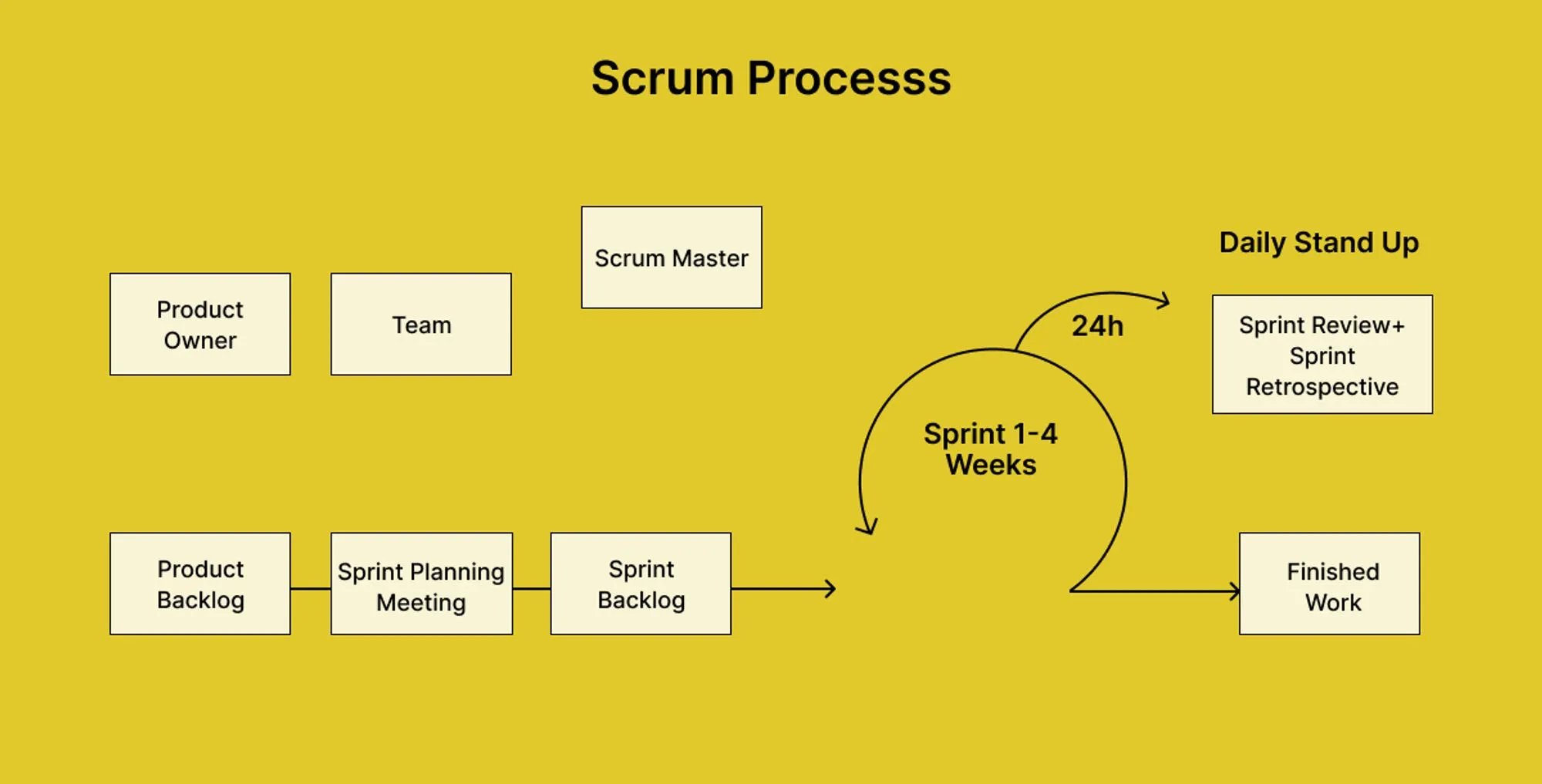
Scrum, a widely recognized framework within the Agile methodology, exemplifies this approach with its sprint-based structure. Each sprint concludes with a review session, where the team evaluates progress and strategizes for upcoming sprints, enhancing the effectiveness and efficiency of the testing process.
2. Waterfall Methodology
The Waterfall model emphasizes a sequential progression through the testing phases.
The process flows downwards through distinct phases like requirements analysis, design, implementation(coding), testing, deployment, and maintenance. Following this, a testing team advances through the project in incremental stages, where each phase must be fully completed before you move on to the next.
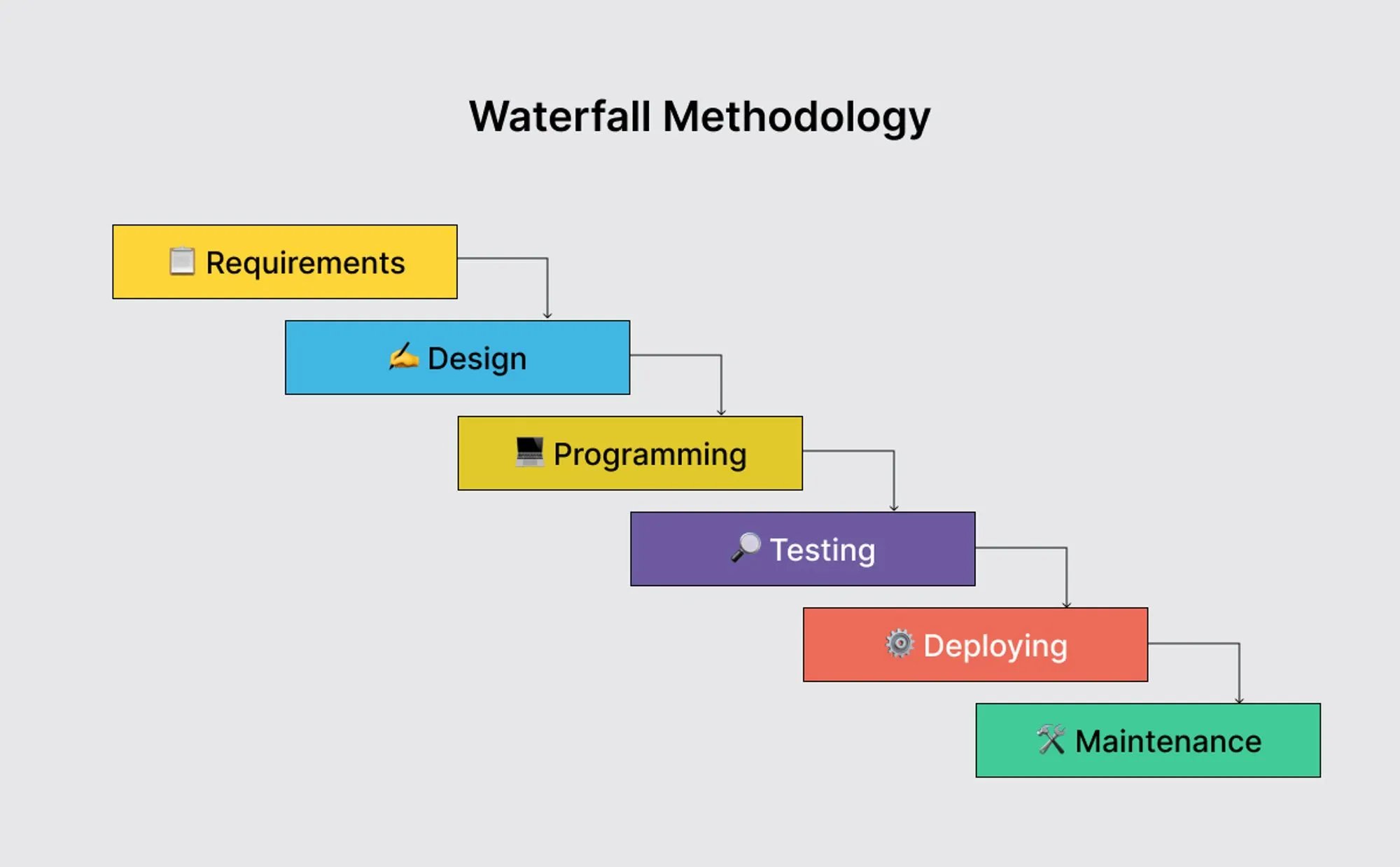
In the context of testing, the Waterfall model typically places the testing activities after the implementation (coding) phase. Testing is conducted on a more or less complete product rather than iteratively throughout its development. Thus, it benefits projects with very stable requirements and where changes are unlikely or minimal. The most notable strength of this methodology lies in its simplicity, offering a clear and structured approach. However, due to its stringent sequential nature, its rigidity can be a drawback, as it limits the team's ability to adapt and implement changes to the testing strategy quickly.
3. Verification and Validation Methodology (V-Model)
The V-Model is an extension of the Waterfall model. The "V" shape of the model illustrates how each phase of development (on the left side of the V) is directly linked to a corresponding testing phase (on the right side of the V).
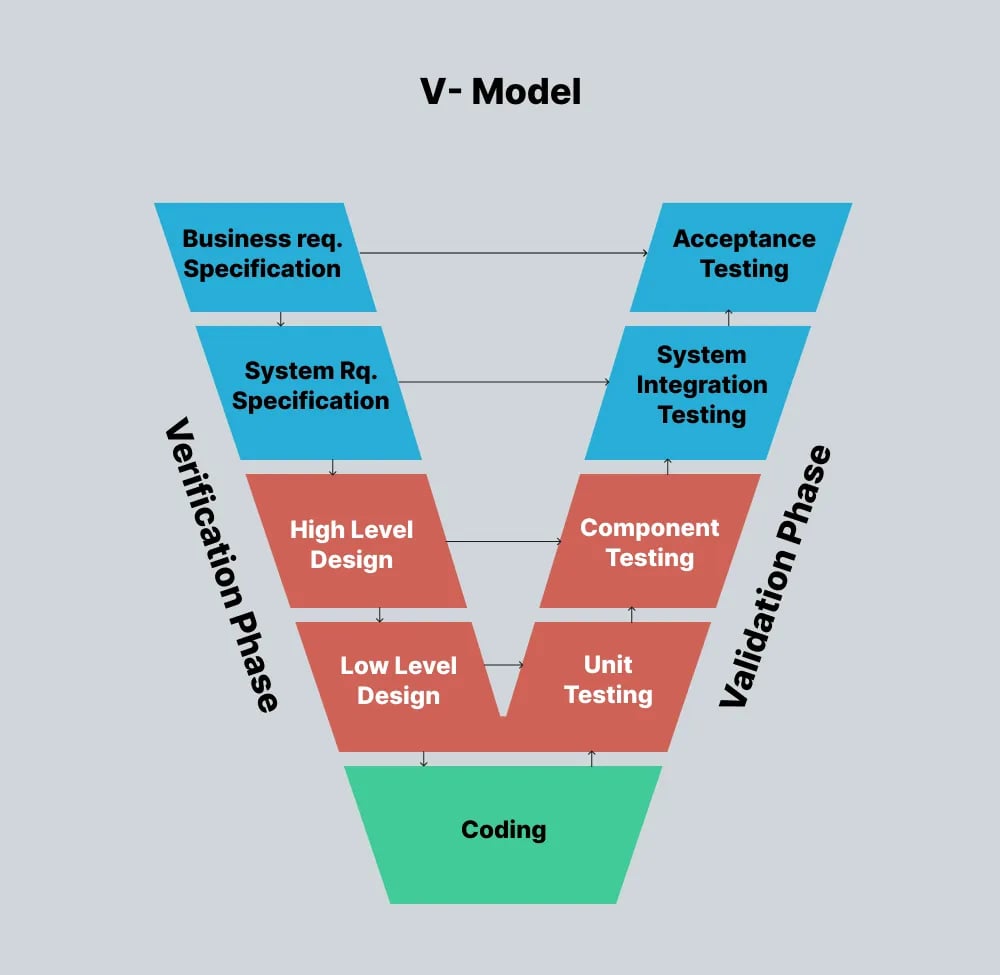
While the V-Model itself doesn't encourage the beginning of testing immediately after a development phase concludes in the way iterative models like Agile do, it does enforce a strict discipline of completing each development phase with its corresponding testing phase in mind. This approach helps identify and correct errors related to each phase before moving on to the next, which can help conserve time and resources by preventing the escalation of problems.
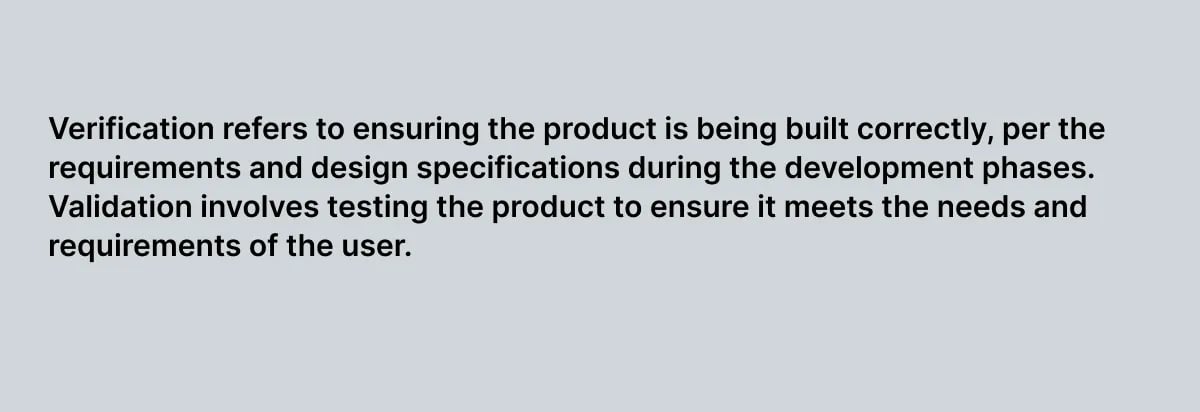
4. Incremental Methodology
The Incremental methodology is distinguished by its iterative development process, where the product is built and delivered in manageable parts, each adding new features or components. A significant advantage of this methodology is its adaptability, enabling teams to quickly incorporate changes or address issues as they arise during testing.

5. Spiral Methodology
The Spiral Methodology is an advanced approach integrating the incremental development model focusing on early risk identification and mitigation. It proceeds through iterative cycles or 'spirals,' comprising four main phases:
- Planning
- Risk analysis
- Engineering (development and testing)
- Evaluation.
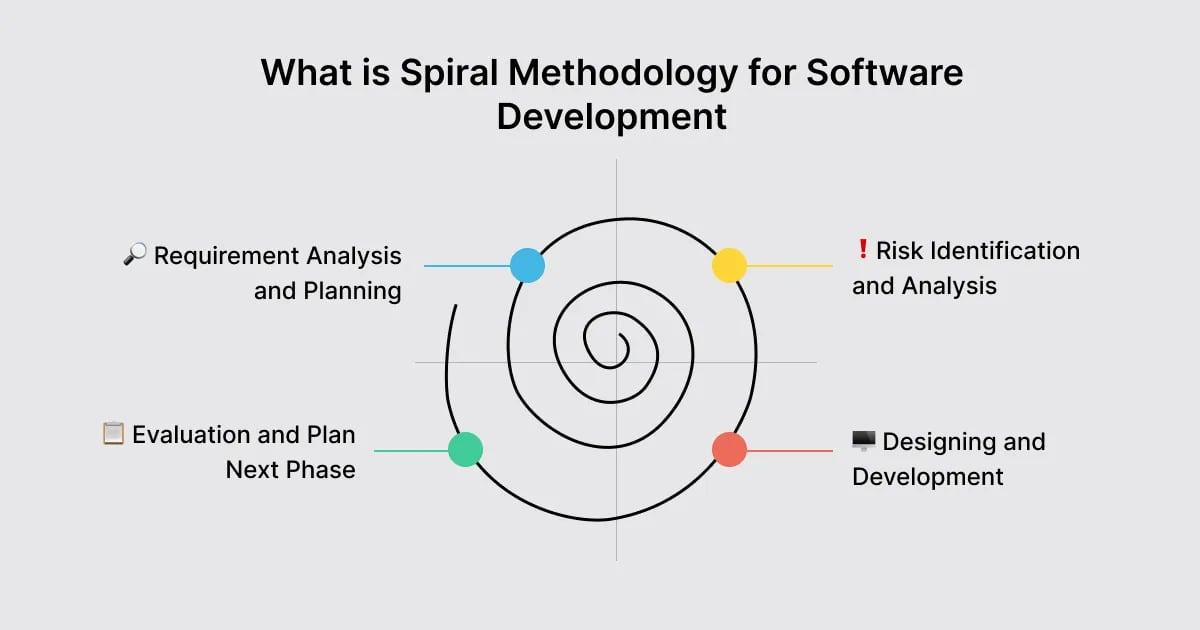
A vital feature of this methodology is its focus on detailed risk analysis at every phase, empowering teams to tackle potential challenges proactively. This strategy enhances the swift identification and resolution of errors, fostering a comprehensive grasp of issues for more efficient troubleshooting.
6. XP (Extreme Programming) Methodology
The XP, or Extreme Programming, methodology is a comprehensive agile framework that promotes close collaboration among all team members (developers, testers, and ultimately, customers). It's known for practices like:
- Pair programming is where two developers work together on the same code to ensure quality through continuous review.
- Test-driven development (TDD) involves writing tests before the actual code, ensuring that predefined tests for comprehensive coverage and correctness guide all development work.
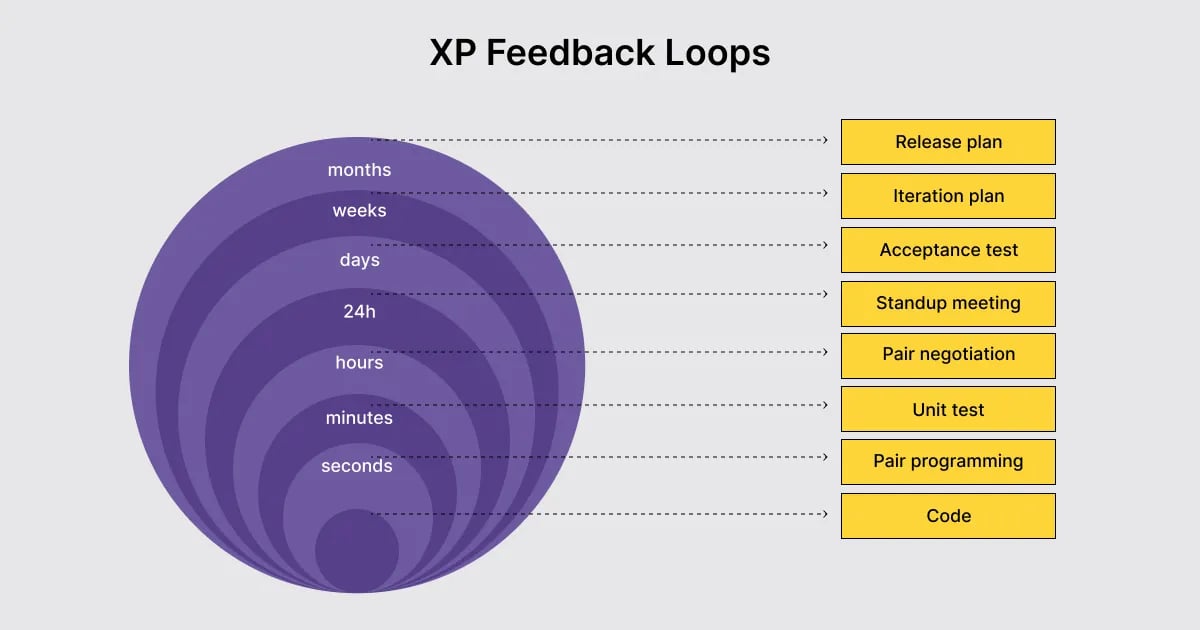
XP's approach ensures that each code segment is written, reviewed, tested, and aligned with customer needs before being considered complete.
Software testing techniques: A comprehensive guide to QA practices
Quality Assurance (QA) is closely linked with testing and teamwork focused on maintaining high code quality. This overview below presents the key types and approaches fundamental to QA testing methodologies.
Techniques in Test Design: Static vs. Dynamic Testing
In QA, testing is broadly categorized into two main types: static and dynamic.
- Static testing involves activities such as monitoring, inspecting, and reviewing the quality of software without actually running it. Teams may examine documentation, reports, and metrics to assess the effectiveness of their workflow, even before the software is operational.
- Dynamic testing requires executing the software to observe its behavior under varying conditions. For example, it evaluates CPU usage, response times, and page loading speeds, which are influenced not only by the software's functionality but also by its compatibility with hardware, operating systems, and performance under low bandwidth conditions.
Standard static testing methodologies include audits, walkthroughs, metric analysis, technical reviews, management evaluations, and inspections. These focus on process-oriented aspects rather than the product itself. Dynamic testing is further divided into:
- Whitebox testing requires a thorough understanding of the code. Testers explore the reasoning behind developers' choices, the specifics of functionality and interface, and the overall system performance.
- Blackbox testing: Here, the tester evaluates the application under test conditions from an end-user's perspective without needing knowledge of the internal workings of the codebase. This approach focuses on assessing the application's performance from an external viewpoint.
Distinguishing functional from non-functional testing
Functional testing analyzes each software function to verify its compliance with the specified requirements. It is typically done through black box testing, where QA engineers assess the external functionality without going into detail about the application's internal working. Common types include:
- Unit testing: Tests individual units or components of a software application for correct operation.
- Integration testing: Examines the interfaces and interactions between integrated components or systems.
- System testing: Validates the complete and fully integrated software product to ensure compliance with the specified requirements.
- Acceptance testing: Assesses whether the system satisfies the business requirements and is ready for deployment.
- Regression Testing: Ensures that recent program or code changes have not adversely affected existing features.
Non-functional testing evaluates the software's overarching attributes, such as performance, usability, reliability, and efficiency, focusing on aspects that enhance the user experience beyond mere functional compliance. Common types include:
- Performance testing: Measures the system's performance under particular conditions. Subtypes include Load Testing (performance under expected loads), Stress Testing (beyond average operational capacity), and Spike Testing (sudden load increases).
- Usability testing: Evaluates how user-friendly and intuitive the application is for end-users.
- Security testing: Identifies software vulnerabilities, threats, and risks to ensure data protection and resistance to malicious attacks.
- Compatibility testing: Checks the software's compatibility with different browsers, hardware, operating systems, mobile devices, and networks.
- Reliability testing: Assesses the software's reliability and ensures it operates correctly under specific conditions for a particular period.
Sustainability and ethics in QA
How can we ensure that Quality Assurance (QA) meets technical standards and upholds values of environmental sustainability, social responsibility, and ethical integrity? Here are some strategic ways to weave these considerations into your QA practices:
1. Eco-friendly testing environments
- Opt for energy-efficient hardware and virtualized environments to reduce the carbon footprint of testing activities.
- Implement cloud-based testing solutions that offer scalable resources and minimize waste through optimized computing power usage.
2. Ethical data usage and privacy
- Ensure all your testing data complies with global privacy standards such as GDPR and CCPA, protecting user data and maintaining transparency.
- Adopt ethical hacking practices, ensuring security testing is conducted responsibly without compromising user data or privacy.
3. Accessibility and inclusivity
- Integrate accessibility testing into QA processes to ensure the software is usable by people with disabilities, promoting inclusivity.
- Consider diverse user scenarios and cultural contexts in testing to ensure the software is ethical and equitable across different demographics.
4. Sustainable development practices
- Employ test automation to streamline testing processes, reduce repetitive manual work, and decrease the environmental impact of prolonged testing cycles.
- Advocate for using open-source tools and libraries, supporting the sustainable development community, and reducing software development costs.
5. Social responsibility and community engagement
- Engage with end-users and stakeholders through beta testing and feedback loops to make sure the software meets community needs and meets ethical standards.
- Support educational initiatives and contribute to public knowledge sharing on sustainability and ethics in software development.
6. Long-term impact assessment
- Regularly review and assess software products' long-term social and environmental impacts, aiming to minimize negative consequences.
- Incorporate lifecycle assessment (LCA) in QA processes to evaluate the environmental impact of software from development to disposal.
7. Ethical supply chain management
- Evaluate and ensure ethical practices in the supply chain for software development resources, including third-party services and components.
8. Promoting transparency and accountability
- Document and report on sustainability and ethics initiatives in QA and development processes, promoting transparency and accountability.
- Foster a culture of ethical awareness and sustainability within the QA team and the broader organization, encouraging continuous learning and improvement.
Enhancing QA through collaboration and expertise
Optimizing your QA process takes thoughtful planning, teamwork, and a willingness to tweak workflows. It's about everyone being on the same page, with management steering the ship. The first step? Seek guidance from seasoned professionals with a proven track record in effective QA practices. This is where Global App Testing can make a significant difference. Our team is ready to extend its expertise by integrating experienced QA engineers into your projects.
We're committed to sharing our best practices, incorporating effective methodologies into your team, and helping you deliver the highest quality product. By partnering with us, you gain access to our wealth of knowledge and resources and the opportunity to adopt these methodologies for independent application in the future. Let's book a call and see how we can bring your QA processes to new heights.
We can help you drive localization as a key initiative aligned to your business goals
Keep learning
15 Tips to write functional test cases
How to create a test plan for software testing in 2025
Automated testing vs Manual testing - What's the difference?

